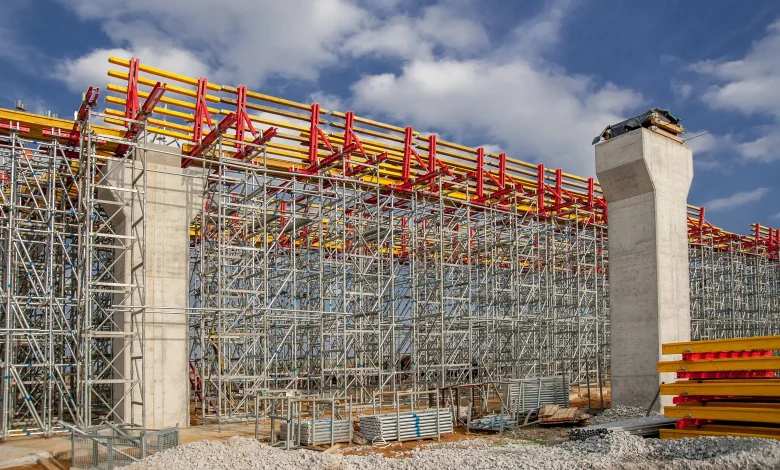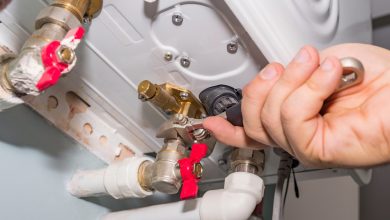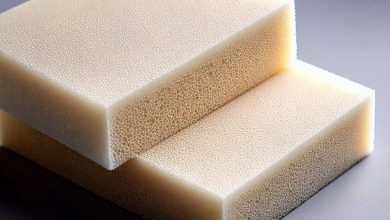How Temporary Structure Engineering Supports Major Projects

Behind every skyscraper, bridge, or large infrastructure development lies a hidden framework of planning and precision — temporary structures that make construction possible. While these structures are not part of the final build, they provide the critical support, stability, and safety needed during construction, renovation, or maintenance.
This field, known as temporary structure engineering, is one of the unsung heroes of modern construction. It enables engineers and contractors to perform complex tasks efficiently and safely, no matter how challenging the site conditions may be. Expert teams like NadeauSDM temporary structure engineering specialize in designing, testing, and overseeing these systems to ensure they meet the highest standards of performance and safety.
Let’s explore how temporary structure engineering plays a vital role in delivering major projects — and why it’s indispensable for successful, on-time, and safe construction outcomes.
1. Understanding Temporary Structure Engineering
Temporary structure engineering focuses on the design, analysis, and implementation of non-permanent systems used during construction or maintenance. These structures are built to support permanent works or provide access and stability.
Common examples include:
- Scaffolding and access towers.
- Formwork and falsework for concrete pouring.
- Temporary bridges and platforms.
- Excavation shoring systems.
- Temporary roofs or enclosures.
- Crane bases and lifting towers.
Each system must be meticulously engineered to handle dynamic loads, environmental stresses, and operational requirements — all within a limited timeframe.
2. Why Temporary Structures Are Crucial for Major Projects
Large-scale construction projects often involve complex geometries, heavy materials, and constrained urban spaces. Temporary structures:
- Provide stability while permanent structures are being assembled.
- Support heavy loads during transitions, such as concrete curing.
- Ensure safe access for workers and machinery.
- Protect the site from environmental factors like wind or rain.
Without temporary works, many modern designs — from suspension bridges to stadiums — simply wouldn’t be constructible.
3. The Scope of Temporary Structure Engineering in Large Builds
Temporary works are used throughout the entire project lifecycle — from site preparation to final handover. Engineers design systems to facilitate:
- Excavation and foundation work.
- Structural assembly and heavy lifting.
- Façade installation and finishing.
- Maintenance and inspection phases.
In each stage, temporary systems must be strong, adaptable, and safe, all while minimizing time and cost.
4. The Role of Temporary Structure Engineers
Temporary structure engineers act as the technical backbone of construction operations. Their primary responsibilities include:
- Structural analysis and load calculations.
- Design of safe, compliant temporary systems.
- Integration with permanent structures during construction.
- Site supervision and inspection of installations.
- Risk assessment and contingency planning.
Their expertise ensures that all temporary systems perform reliably under real-world conditions.
5. Collaboration Across Disciplines
Temporary structure engineering doesn’t happen in isolation. Engineers work closely with:
- Architects, to understand the design intent.
- Civil and structural engineers, to coordinate loads and connections.
- Contractors, to align systems with construction methods.
- Health and safety officers, to ensure regulatory compliance.
This interdisciplinary approach ensures every temporary structure contributes seamlessly to the project’s overall workflow.
6. Structural Design and Load Analysis
Every temporary system must withstand multiple forces — not just its own weight, but also external loads such as:
- Live loads: Workers, materials, and machinery.
- Environmental loads: Wind, snow, and seismic activity.
- Dynamic loads: Movement from equipment and vibrations.
Engineers use advanced modeling techniques and simulation tools to analyze these forces, ensuring the structure remains stable and performs as expected throughout its lifespan.
7. Common Types of Temporary Structures in Major Projects
Temporary structure engineering covers a broad range of systems, each with specific functions:
- Formwork and Falsework: Support fresh concrete until it hardens.
- Scaffolding: Provides safe access for workers at height.
- Shoring Systems: Stabilize excavations or existing structures.
- Cofferdams: Create dry environments for underwater construction.
- Temporary Bridges and Roads: Facilitate logistics and site access.
- Lifting Platforms and Tower Bases: Support cranes and heavy equipment.
Each design must account for project-specific challenges like load variations, space constraints, and environmental exposure.
8. Safety as a Core Principle
Temporary structure engineering is inseparable from safety. Improperly designed temporary works can lead to catastrophic failures. Engineers follow rigorous standards — such as OSHA, Eurocode, and CSA guidelines — to guarantee that every system is structurally sound.
Safety measures include:
- Regular site inspections.
- Load testing before use.
- Continuous monitoring for movement or deformation.
- Worker training for proper use of temporary systems.
These practices ensure that both the structure and the people using it are protected at all times.
9. Design Optimization and Efficiency
Efficiency is crucial for large-scale projects where time and cost are critical. Temporary structure engineers design systems that are:
- Modular, allowing quick assembly and reuse.
- Lightweight but strong, to minimize material use.
- Easy to dismantle and transport, reducing downtime.
Modern materials such as aluminum, high-tensile steel, and composite panels make temporary works both durable and sustainable.
10. Sustainability in Temporary Works
Sustainability is becoming a defining factor in modern engineering. Temporary structure engineering now prioritizes:
- Reusable modular components to minimize waste.
- Recyclable materials like aluminum and steel.
- Energy-efficient designs that reduce environmental impact.
- Eco-friendly construction practices during setup and removal.
By designing systems with longevity and reusability in mind, engineers reduce both project costs and ecological footprints.
11. Real-Time Monitoring and Smart Technologies
With the integration of digital technology, temporary works are becoming smarter. Engineers now use:
- Sensors to track load stresses, movement, and vibrations.
- Digital twins for real-time simulation of structural behavior.
- AI algorithms to predict potential risks or failures.
These innovations allow for proactive maintenance, improving both safety and efficiency during construction.
12. Managing Complex Site Conditions
Large projects often present challenging environments — soft soils, tight spaces, or extreme weather. Engineers adapt temporary designs by using:
- Ground anchors and retaining systems for stability.
- Weatherproof enclosures for climate-sensitive tasks.
- Compact modular systems for restricted urban sites.
Each temporary structure is customized to fit the unique physical and logistical constraints of the project site.
13. Case Example: Infrastructure and Bridge Construction
Bridge and tunnel projects rely heavily on temporary works. For example:
- Falsework supports bridge decks while concrete cures.
- Cofferdams allow for dry underwater foundation work.
- Access scaffolds provide safe pathways for workers and equipment.
Engineers calculate every load and factor in variables like water pressure, vibration, and material stress to ensure these systems remain stable until permanent elements are complete.
14. The Value of Professional Expertise
The complexity of today’s construction demands precision and reliability. That’s why companies turn to professionals like NadeauSDM temporary structure engineering — experts with the technical expertise, experience, and advanced tools to handle high-risk, high-value projects.
Their engineers design tailored, code-compliant systems that meet the exact needs of each site, balancing safety, efficiency, and sustainability.
15. The Future of Temporary Structure Engineering
The field is evolving toward automation, digital modeling, and sustainable innovation. The next generation of temporary structure engineering will focus on:
- Automated assembly systems to improve speed and safety.
- Advanced materials like carbon fiber composites.
- Real-time data integration for predictive maintenance.
- Circular design principles to enhance reusability.
As projects grow in scale and complexity, temporary works will continue to be at the heart of safe and efficient construction practices.
Final Thoughts
While temporary structures may be short-lived, their importance is anything but temporary. They provide the foundation for safety, stability, and success across every major construction project.



